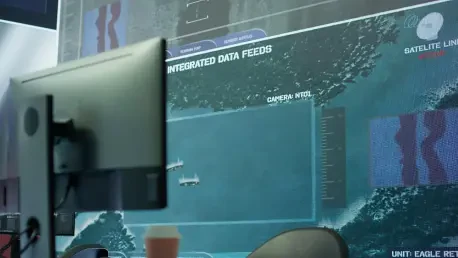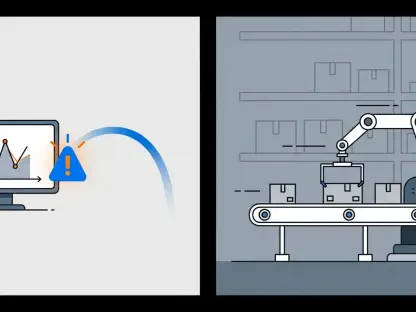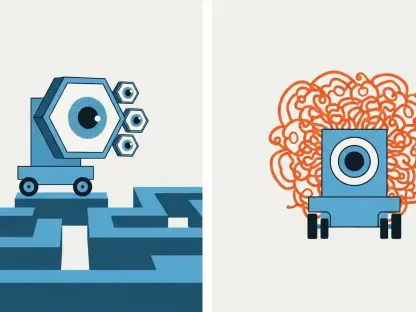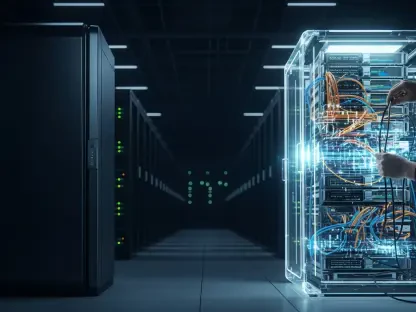Setting the Stage for Underwater Innovation
Imagine a vast, uncharted ocean where, hidden beneath the waves, submarines glide silently, carrying the weight of national security and nuclear deterrence. For decades, these vessels have been the ultimate ghosts of naval warfare, nearly impossible to track due to the ocean’s opacity. Yet, a technological revolution is underway, challenging this age-old stealth with systems that can pierce through the depths. Autonomous submarine detection, powered by cutting-edge innovations, is transforming anti-submarine warfare (ASW) and maritime security, raising critical questions about the future of naval power. This review dives into the mechanisms, capabilities, and implications of these advancements, shedding light on a battlefield that is becoming increasingly transparent.
Understanding the Foundations of Autonomous Detection
Autonomous submarine detection refers to the use of self-operating systems and advanced technologies to locate and track submarines without constant human intervention. At its core, this field integrates sensors, artificial intelligence (AI), and autonomous platforms to create a persistent surveillance network across vast ocean expanses. The shift from traditional methods, which relied heavily on sound-based sonar, to multi-dimensional approaches marks a significant leap, reflecting the growing complexity of underwater threats and the need for real-time responsiveness in naval operations.
The historical evolution of this technology traces back to early acoustic detection during the World Wars, progressing through Cold War advancements in sonar arrays. Today, the focus has expanded beyond mere sound, incorporating diverse data sources to counter increasingly sophisticated submarine designs. This transition underscores a broader trend in naval technology toward automation and data integration, positioning autonomous detection as a cornerstone of modern maritime defense strategies.
Core Technologies Driving Detection Capabilities
Artificial Intelligence and Data Fusion
A pivotal element in autonomous submarine detection is the application of AI to analyze and synthesize data from multiple sources. By processing inputs from sonar, radar, and magnetic sensors, AI algorithms can distinguish submarines from background noise with remarkable precision. This capability not only enhances detection accuracy but also enables predictive modeling, allowing systems to anticipate submarine maneuvers based on historical patterns.
Unlike human operators, AI systems operate without fatigue, maintaining constant vigilance over expansive ocean regions. This endurance is critical in scenarios requiring long-term monitoring, such as protecting strategic waterways or tracking covert operations. The ability to fuse disparate data into actionable intelligence represents a transformative step, reducing response times and improving decision-making in high-stakes environments.
Furthermore, the ongoing refinement of AI models addresses challenges like false positives and environmental interference. Investments in explainable AI ensure that naval commanders can understand and trust automated recommendations, preserving human oversight in critical operations. This balance between automation and human judgment is essential for integrating AI into existing naval frameworks.
Autonomous Vessels and Drones
Another key component is the deployment of uncrewed surface vehicles (USVs) and autonomous underwater vehicles (AUVs), which form a scalable network of sensors across the seas. Platforms like the US Navy’s Sea Hunter exemplify this trend, offering cost-effective solutions for extended surveillance missions. These vessels can operate for weeks without human intervention, collecting real-time data over vast distances.
The versatility of autonomous drones allows for dynamic coverage, adapting to mission requirements and environmental conditions. Their ability to swarm in coordinated patterns amplifies detection reach, creating a web that is difficult for submarines to evade. This scalability also makes ASW more accessible, potentially leveling the playing field for smaller navies with limited resources.
Beyond endurance, these systems contribute to risk reduction by minimizing human exposure in hostile or remote areas. Their integration with shore-based command centers ensures seamless data relay, enabling rapid strategic adjustments. As development continues, enhancements in energy efficiency and sensor payloads promise to further expand their operational scope.
Non-Acoustic Detection Methods
Complementing traditional sonar, non-acoustic technologies are redefining how submarines are tracked by focusing on indirect signatures. Synthetic aperture radar on satellites detects surface disturbances caused by submerged vessels, while quantum magnetometers identify magnetic anomalies from significant distances. These methods exploit the subtle traces left by submarines, even when they minimize noise output.
Distributed acoustic sensing (DAS), utilizing undersea fiber-optic cables as massive hydrophones, offers another innovative approach. By capturing pressure waves and vibrations, DAS transforms existing infrastructure into a detection grid, covering thousands of miles. This repurposing of technology highlights the creative adaptation driving modern ASW efforts.
The advantage of non-acoustic methods lies in their ability to bypass limitations of sound-based systems, such as distortion from ocean temperature gradients. While still in developmental stages for some applications, these technologies signal a future where multiple detection layers converge, significantly reducing the hiding spaces available to submarines.
Recent Innovations and Emerging Trends
The landscape of autonomous submarine detection is witnessing rapid advancements, particularly in sensor integration and networked systems. Recent developments focus on creating seamless communication between satellites, drones, and seabed sensors, forming a cohesive surveillance ecosystem. This interconnectedness enables real-time triangulation of submarine positions, enhancing the speed and accuracy of threat identification.
Emerging trends also point toward the democratization of ASW capabilities through affordable autonomous platforms. Smaller, modular systems are lowering the barrier to entry, allowing a broader range of actors to engage in underwater monitoring. This shift could reshape naval strategies, as nations and even non-state entities gain access to tools once reserved for major powers.
Looking ahead, the vision of a “connected ocean” drives innovation, aiming to mirror the transparency achieved in aerial domains through radar. Over the next few years, from 2025 to 2030, the proliferation of networked technologies is expected to further erode submarine stealth, prompting a reevaluation of traditional maritime doctrines. Such progress underscores the relentless pace of change in this field.
Real-World Applications and Use Cases
Autonomous submarine detection technologies are already proving their value across diverse naval contexts. Major navies deploy these systems for defense operations, safeguarding territorial waters against covert intrusions. Their role in nuclear deterrence is equally critical, ensuring the protection of second-strike capabilities by monitoring potential threats to strategic assets.
Beyond military applications, these technologies support maritime security by protecting vital undersea infrastructure, such as communication cables and energy pipelines. Autonomous systems can detect unauthorized activities near these assets, preventing sabotage or espionage. This dual-use potential highlights their versatility in addressing both state and non-state challenges.
Unique use cases also emerge in countering illicit submarine operations, such as drug trafficking or smuggling in coastal regions. By providing persistent surveillance, autonomous platforms assist in intercepting such activities, extending the reach of law enforcement into remote maritime zones. These examples illustrate the broad impact of detection technologies on global security.
Challenges and Limitations
Despite their promise, autonomous submarine detection systems face significant hurdles rooted in environmental complexities. Ocean conditions, including salinity layers and thermal gradients, often distort sensor signals, complicating accurate identification. Addressing these natural barriers requires continuous advancements in signal processing and adaptive algorithms.
Technical challenges also persist, particularly in the computational demands of AI-driven analysis. Processing vast datasets in real time strains current hardware capabilities, necessitating ongoing investment in infrastructure. Additionally, ensuring the reliability of autonomous systems in unpredictable underwater environments remains a critical concern for developers.
Strategically, the integration of these technologies raises questions about human oversight and ethical implications. While automation enhances efficiency, maintaining trust through explainable AI is vital to prevent unintended escalations. Efforts to balance technological autonomy with human control are underway, reflecting the nuanced challenges of adopting such systems in naval operations.
Future Outlook for Submarine Detection
The trajectory of autonomous submarine detection points toward groundbreaking advancements in sensor technology and data analytics. Potential innovations include more sensitive magnetometers and enhanced AI capable of learning from evolving submarine tactics. These developments could further diminish the effectiveness of stealth, reshaping the underwater domain.
As detection capabilities grow, countermeasures are likely to intensify, with submarines operating at greater depths or employing decoy drones to confuse sensors. This cat-and-mouse dynamic suggests a future of constant adaptation, where both sides innovate to maintain an edge. The interplay between detection and evasion will define naval warfare in the coming decades.
Long-term, the impact on global security and naval doctrines could be profound, as increased ocean transparency alters the balance of power. Nations may need to rethink strategies for deterrence and covert operations, adapting to an environment where anonymity is no longer guaranteed. This evolving landscape presents both opportunities and risks for international stability.
Reflecting on the Path Forward
Looking back, the exploration of autonomous submarine detection revealed a transformative shift in naval warfare, where technology steadily eroded the veil of underwater stealth. The convergence of AI, autonomous platforms, and non-acoustic methods marked a turning point, enhancing surveillance in ways previously unimaginable. Each advancement, from data fusion to networked systems, played a crucial role in redefining maritime security.
Moving forward, the focus should pivot to overcoming environmental and technical barriers through collaborative research and international standards for autonomous systems. Investment in robust AI frameworks and next-generation sensors will be essential to sustain momentum. Additionally, fostering dialogue on ethical deployment can ensure these tools serve global stability rather than exacerbate tensions.
Naval forces must also prepare for adaptive threats by integrating flexibility into strategic planning. Developing hybrid models that combine human intuition with machine precision offers a balanced approach to future challenges. As the ocean becomes more transparent, embracing innovation while safeguarding oversight will be key to navigating this uncharted territory.









